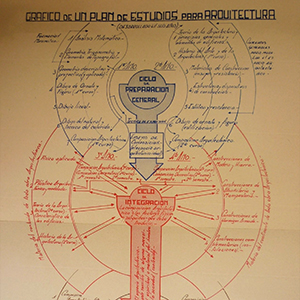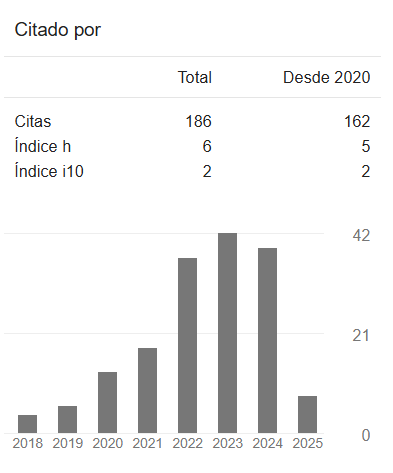Architecture: one hundred years of education in the Province of Santa Fe
Institutions, actors, and debates in the definition of the academic space in the Littoral Region
DOI:
https://doi.org/10.35305/23626097v9i17.390Keywords:
architecture, education, National University of Littoral, Santa FeAbstract
Within the framework of the call to celebrate the centenary of architecture professional education in the Littoral Region, this article analyzes a series of factors featuring different relevant moments in the definition of this professional profile. In particular, the time frame of the text begins with the creation of the School of Architecture of the National University of Littoral in 1923, articulating its transition to the National University of Rosario in 1968 and the reinstatement of this career at the National University of Littoral in 1985, in the current Faculty of Architecture, Design and Urbanism.
It is interesting to consider the characteristics that defined the different curricula and the modification proposals, the actors in charge of institutional policies, the key role of the student body. These are among other conditions that, all together, contributed to shape the profile of disciplinary education in different institutions of the region throughout a century.
Downloads
Metrics
References
Altgelt, C. (1909, noviembre). Necesidad de deslindar. Arquitectura, (59), 145-153.
Aprobación del plan de estudios para la Escuela de Arquitectura, proyectado por la Facultad de Ciencias Matemáticas. (1935). En Boletín de la Universidad Nacional del Litoral (pp. 22-23). Santa Fe, Argentina: UNL.
Blanc, M. (2022). La formación de los arquitectos. Notas curriculares de un cambio de época. Rosario, 1953-1957. Módulo Arquitectura CUC (28), 73-102.
Bragagnolo, E. (1994). Una reseña histórica. En AA.VV. 70 aniversario de la creación de la carrera de Arquitecto en Rosario. 1923 – 1993 (pp. 11-36). Rosario, Argentina: FAPyD / UNR.
Buchbinder, P. (2005). Historia de las Universidades Argentinas. Buenos Aires, Argentina: Sudamericana.
Cicutti, B. (1984). Facultad de Arquitectura, Universidad Nacional de Rosario: Su formación y desarrollo 1923 – 1980. Rosario, Argentina: Mimeo.
Collado, Adriana (Dir.) (2019). La manzana histórica de la Universidad Nacional del Litoral. Santa Fe, Argentina: Ediciones UNL.
Consejo Superior UNL, (1985, 29 de marzo). Resolución n° 10. Colección Ordenanzas y resoluciones de la Universidad Nacional del Litoral, Santa Fe.
Constantinowsky, W. (1930, octubre). La crisis arquitectónica. Nuestra Arquitectura, (15), 591-592.
Conti, J. (2005). Lux Indeficiens. La juventud que no puede faltar. Conciencia, 2(4), 14-15.
Cravino, A. (2012). Enseñanza de arquitectura, una aproximación histórica 1901-1955. La inercia del modelo Beaux Arts. Buenos Aires, Argentina: SCA/Nobuko.
De Lorenzi, E. (1932, diciembre). Los equipos de arquitectura. El Constructor Rosarino, (110), 13-19.
Dirección General de Arquitectura (1936). Construcción del Edificio para la Facultad de Ingeniería y Escuela Industrial de Rosario. Boletín de Obras Públicas de la República Argentina, (21), 1.
FAPyD UNR (1970, 6 de junio). Ordenanza Rectoral n° 40. Archivo Secretaría Académica FAPyD, UNR, Rosario.
Gutiérrez, R. y Paterlini, O. (Eds.) (2007). Historia de la Arquitectura en la Argentina. Reflexiones de medio siglo, 1957-2007. IIDEHA. Buenos Aires, Argentina: CEDODAL, Centro Marina Waisman, UNT.
III Congreso Panamericano de Arquitectos. (1927, agosto). Revista de Arquitectura, (80), 311-316.
Micheletti, J. (1942). El arquitecto, su vocación, su preparación, su actuación profesional. Rosario, Argentina: UNL.
Molina, M. (2003). Una historia sobre la creación de la Facultad de Arquitectura, Diseño y Urbanismo. Polis, 4(7), 22-25.
Monti, A. (2013). Una escuela, dos institutos: Hardoy + Hardoy en Rosario. (1955-1965). Registros, (10), 24-37.
Müller, L. y Parera, C. (2010). Aproximaciones a un espacio académico cambiante. Escuelas y facultades de arquitectura en la provincia de Santa Fe (1923 – 1985). Estudios del Hábitat, (11), 23-35.
Núñez, M. V. (2015). Un momento arquitectónico en Córdoba: 1916-1926. Síntesis, (6), 221–243.
Ordenanza creando la Escuela de Arquitectura y aprobando el plan de estudios para la misma. (1924). En UNL. Ordenanzas y resoluciones de la Universidad Nacional del Litoral (1923, 22 de mayo a 1924, 1º enero) (pp. 11 – 12). Santa Fe, Argentina: Imprenta Provincial.
Parera, C. (2020). El rol de los arquitectos como técnicos del Estado desarrollista. En: L. Müller y C. Shmidt (Comps). Arquitecturas de Estado: empresas, obras e infraestructuras (1955 – 1975), casos y debates en Sudamérica. (pp. 55-75). Santa Fe, Argentina: Ediciones UNL.
Piazzesi, S. y Bacolla, N. (Eds.) (2015). El reformismo entre dos siglos. Historias de la UNL. Santa Fe, Argentina: Ediciones UNL.
Plan de estudios (1957). Archivo Secretaría Académica FAPyD UNR, Rosario.
Reinante, C. (2003). Imaginarios que rodearon la lucha por la creación de la FADU en UNL. Polis, 4(7), 14-17.
Rigotti, A. M. (2012). Un foco de innovación. Urbanismo en la Escuela de Arquitectura de Rosario (1929–1980). Cuadernos del CIESAL, 9(11), 61–82.
Sammartino, R. (1936, enero). Alrededor de la formación del arquitecto. Revista de Arquitectura, (181), 15-18.
Shmidt, C. (2015). Francisco Bullrich y la historia de la arquitectura. Anotaciones en tres momentos. Vitruvia, 2(II), 101-114.
Steinhof, E. (1934, julio). El nuevo camino en la enseñanza de la arquitectura. Revista de Arquitectura, (163), 295-297.

Published
How to Cite
Issue
Section
License
Open access policy
A&P Continuidad is a non-profit and open access publication. According to Mexico Declaration on Cultural Policies, the journal distribution is submitted to Creative Commons Attribution-Noncommercial-ShareAlike 4.0 International Public License (CC BY-NC-SA). “Neither the commercial use of the original work nor that of the possible derivative works are allowed. The distribution of derivative works should be submitted to the license regulating the original work. This license is not free.”
A&P Continuidad authorizes the partial or full reproduction of texts and graphs provided that the source is cited. Authors are exclusively responsible for the criteria expressed in the articles which do not necessarily reflect the opinion of the Editorial Committee or that of the Direction Board. The copyright of the published articles pertains to their authors or publishers.
Transfer of rights
The acceptance of an article to be published implies the author’s transfer of rights to the journal. Authors continue to have the right to use the material in future books or publications, approve or veto the republication of their works as well as the rights related to patents or other rights. Transfer of rights form may be downloaded here.





























 This OJS site and its metadata are under a
This OJS site and its metadata are under a 

